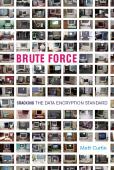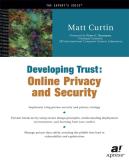Machine Music
Early personal computers had sound capabilities of various levels of sophistication. The earliest machines could make a single sound, generally a beep. Even in those early machines, though, the duration and pitch of the beep could be controlled, leading some to write music to play for a single voice for use on computers.
The single voice of sound quickly became inadequate, especially for people who wanted to play games on their computers. The Commodore 64 and eight-bit Atari systems were early offerings of systems with multi-voice sound.
Amiga machines took this a step further, with its four-voice stereo sound processor. Not only was the system capable of playing more sophisticated sounds, but its on-board sound processor could take care of all of the work needed for sound synthesis, leaving the central processor free to do other tasks. As programmers figured out how to take advantage of this capability, video games on the Amiga came to have a richer sound experience, complete with musical scores, rather than simple sound effects to simulate crashes, explosions, and whatever else the gamer might expect.
During this era, I was an Apple fan. I had access to various Apple II models ranging from the II+ through the IIe (enhanced) and programmed them all. I wasn't inclined just to like the Apple machines on the grounds that it was what I knew—I used and programmed an Atari machine at home. Through various friends I could use any of the machines available at the time. I always preferred the Apple II, the system that could be opened without any tools and that was completely open to be used however its owner could envision.
In 1988, I was introduced to the Apple IIGS, the newest machine in the aging Apple II line. Though designed to look visually like the sleek Macintosh machines that were becoming tremendously popular, the system ran all of the Apple II software and could still be easily opened without tools for tinkering by the user. Not just another Apple II model, though, the IIGS was made with the specific idea of offering better graphics and sound (hence the GS model name). Unlike the previous Apple II models, the IIGS had a sixteen-bit processor. Several new graphics modes brought the Apple II's line up (or at least closer) to the times. A separate on-board sound processor (the Ensoniq Digital Oscillator Chip) could play fifteen voices, making it dramatically more sophisticated than what was generally available to the home market.
More interested in sound than computer graphics, I started looking for software that would demonstrate the system's capabilities. I found large archives of sound modules (“mods”) written and played generally in the Amiga world. The IIGS could easily keep up with the four-channel format of the mods. Programs for creating and playing music in this format are known as trackers.
In the early 1990s, I continued to use my Apple IIGS and ran a Unix-like multitasking system on it called GNO/ME, allowing me to run multiple programs at once. With this capability, I could simply have the computer operate as a jukebox, playing music out of my collection of mods while I was working. In addition to the four-channel mods, some IIGS-specific formats allowed that system's capabilities to be used fully. Probably the most impressive music of all came from the best of the IIGS demos produced by such characters as “Bullwinkle Moose” and especially the French group FTA—the Free Tools Association.
Since then, new formats have been created to deal with increasingly sophisticated sound processing capabilities in computer technology. As computer sophistication increased, the line between the worlds of sound tracking on computers and sequencing on digital musical instruments (that used MIDI, the musical instrument digital interface) blurred. While most professional musicians begin playing their instruments and then find computer technology to help them make or distribute their music, the convergence of computing and digital instruments has allowed for some musicians to go the other way around: starting with composition on computers and then moving to the use of digital instruments. Perhaps the most famous example is that of Moby, who started out writing music on his Amiga and can now be seen on MTV when he's not touring the world.
Hear the difference between a four-voice MOD and fifteen-voice sound, as demonstrated in this early work by Moby. Both files are in MPEG audio for easy playback on mp3 players. Dragonsfunk, as a MOD; Dragonsfunk, rearranged and played on the Apple IIGS for the FTA Delta Demo.
After the IIGS, my primary systems were workstations from Sun and especially SGI—systems that had sophisticated sound-processing capability built-in. It was on the SGI Indy that I first encountered MPEG audio playback in 1995, when I found the Internet Underground Music Archive. That was only the beginning of what was to come.
The vast majority of music on computers now is simply playback, not because there are fewer people using computers to make music, but because there are so many more people using computer technology to listen to music. Mainstream consumer-grade computers now have relatively sophisticated playback ability, and almost everyone can play MPEG audio on their computers, with many making it even more portable than that with the massive success of such portable audio players like Apple's iPod.
Recently feeling nostalgic, I enabled sound support on a system I use regularly. Aside from the obvious software for playing MPEG audio, I found myself a few trackers for Unix, including SoundTracker, CheeseTracker, and the playback-only command-line tracker. With a little poking on the Web, I was able to locate huge archives of mods and other music files in newer tracker formats including XM, MED, and IT.
Storage is a big deal with digital music, and here is where there is a clearly-visible difference between digitized sound (like MPEG) and a file that describes for a sequencer how to play music. MPEG audio files are ultimately descriptions of sound waveforms in a “frame” and an ordering of these frames to play them quickly enough that the ear hears a constant stream of sound. High-quality waveform representation (such as exists on compact disc digital audio) requires a lot of storage space: less than an hour of sound can take an entire compact disc. MPEG is in intermediate format that will describe the waveforms, allowing for things like how many bits to burn through in a second and various types of compression. Because MPEG uses “lossy compression,” which is to say that some of the details are literally lost in translation, the higher the compression, the lower the quality of the sound. As MPEG audio is typically encoded (MPEG-2 Layer III, mp3), though, most listeners will get quality that satisfies them, while being able to more than ten hours' sound on a single compact disc that they can burn themselves.
Music represented in tracker files, on the other hand, do not describe the entire recording as a series of waveforms. Though specifics vary on each format, a description of a waveform will be made and referred to as a sample or an instrument. After all of the instruments are described, the rest of the file simply describes how to sequence them, which instruments to play in which channel, at what pitch, and what duration. The number of voices available on the audio hardware will determine the number of instruments that can be played simultaneously. Thus if you listen to the Dragonsfunk sounds nearby, you'll notice a significant difference in the four-voice and fifteen-voice versions: the IIGS audio hardware simply sounds better because it was able to do more at once. A big side-effect of this method for encoding music is the size: the MOD is about three and a half percent the size of the MPEG. A sequence of instruments is much, much easier to represent than a long sequence of frames containing waveforms.
MPEG audio really makes sense for recordings: other instruments, voices, or things are making sound which is then recorded and stored in a digital form. That, naturally, requires playback to be a reconstruction of the waveforms that held the sound as it was played in the first place. As this is (thankfully) the majority of the music that's out there, the most common audio formats like MPEG work to reconstruct such waveforms. But many people who like music played on electronic instruments remain blissfully unaware of a large body of electronic music that's out there in other formats. Many of the musicians who have been using computers as their instruments are now converting their work to MPEG audio, as I did with Moby's work above, to make them accessible to a wider audience.
Some object to the use of computing technology in music, but I see no reason why a computer cannot be as much of an instrument as anything else. While I have no interest in seeing computers replace other instruments (or the performers who use them, for that matter), drawing an artificial line between “machine music” and “real music” is shortsighted. The question is not how you can use the computer to imitate other instruments or to replace musicians, but rather what new things can be done with the technology. I leave you with more wisdom from Rush, in “The Spirit of Radio.”
All of this machinery making modern music
Can still be open-hearted
Not so coldly charted
It's really just a question of your honesty
Yeah, your honesty.

